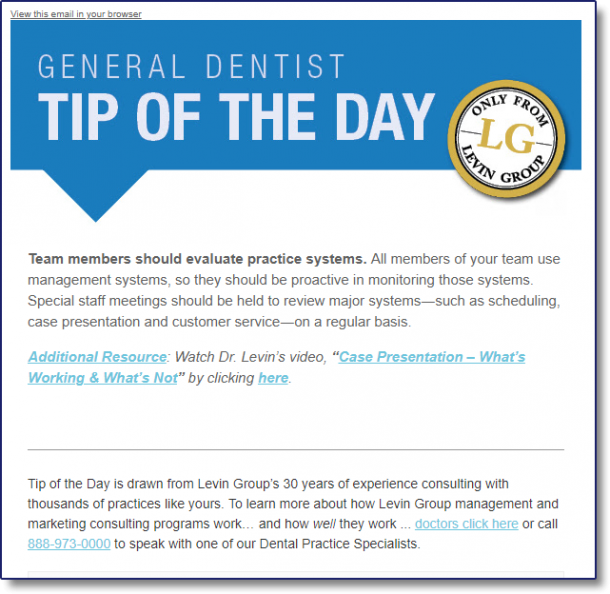“Why haven’t you reached the next level?” This is a question I ask doctors who attend my seminars.
And here are some of the more popular responses I get:
- “Too busy treating patients.”
- “Not enough patients.”
- “Staff isn’t properly trained.”
- “Can’t find excellent staff.”
- “My area is in an economic slump.”
I’m sure these factors inhibit growth, but the biggest one––and the one that nobody mentions––is the lack of time most dentists spend on CEO-level activities, such as strategic planning.
Just showing up every day and doing dentistry isn’t a plan. Yes, it’s part of your job, and a critical function at that, but as the practice owner, you also need to spend time plotting your course, so you can reach your destination. Sticking with my boating analogy, you can’t spend all of your time in the boiler room, feeding the furnace… because, if you do, then who’s steering the ship?
The Big Picture
As a dentist, you spend most of your day, treating patients. You’re always in motion, going from patient to patient, procedure to procedure, treatment room to treatment room. It takes a lot of energy and focus just to make it through the day.
Yet, if you always got your head down, how do you know if you’re headed in the right direction?
That’s why one of the first things we teach our new clients to do is create a practice vision. Many practices don’t have a vision or at least an updated one. A vision is where you want your practice to be in three years. You may want to increase production to $1.5 million, open a satellite office, take on an associate, or start a small group practice. There are a lot of possibilities. It’s about what you want to achieve in the next three years.
For the vision to become a real thing, it should be written down. Typically, a vision statement is 2–3 paragraphs at the most. Here’s an example:
Our practice will generate $1.4 million in production. We will be recognized as a leading cosmetic practice in the area, with elective treatment accounting for 25% of total doctor production. We will upgrade our facility and create a spa-like atmosphere.
We will invest in new practice management software and equipment, enabling our team to improve efficiency and customer service. Our practice will be known for providing outstanding customer service, which will lead to a 20% increase in word-of-mouth referrals.
Creating a vision statement doesn’t mean the vision will automatically happen. But it’s the crucial first step that triggers a whole series of initiatives and improvements.
For example, if the goal is to reach is $1.4 million in production and the practice is currently at $1 million, what are you willing to do to make the vision a reality? What changes need to happen in Year 1? Year 2? Year 3?
By mapping out each stage of your journey, you can arrive at your destination on time––just like you planned.
Conclusion
For practice owners, dentistry is only one part of the job. The other part––being the CEO––nearly always gets short-changed. After all, dentists have a DDS, not an MBA, so it seems only right that they spend most of their time focused on their patients. Yet, if little or no time is devoted to being the CEO, production will eventually stagnate or, worse, decline. Then, what?
That’s a situation you don’t want to be in. Playing catch-up isn’t any fun, especially in the current business environment. Avoid that scenario by doing everything you can to be the best CEO right now.
Additional Resource
Practice not performing at maximum level? Learn more about our management consulting program by clicking here.
[thb_button link=”https://levingroup.com/practicesuccess/” class=”pull-right” style=”” rounded=”” color=”black” icon=”” size=”medium” animation=”right” ]Back to Practice Success Archive »[/thb_button]
